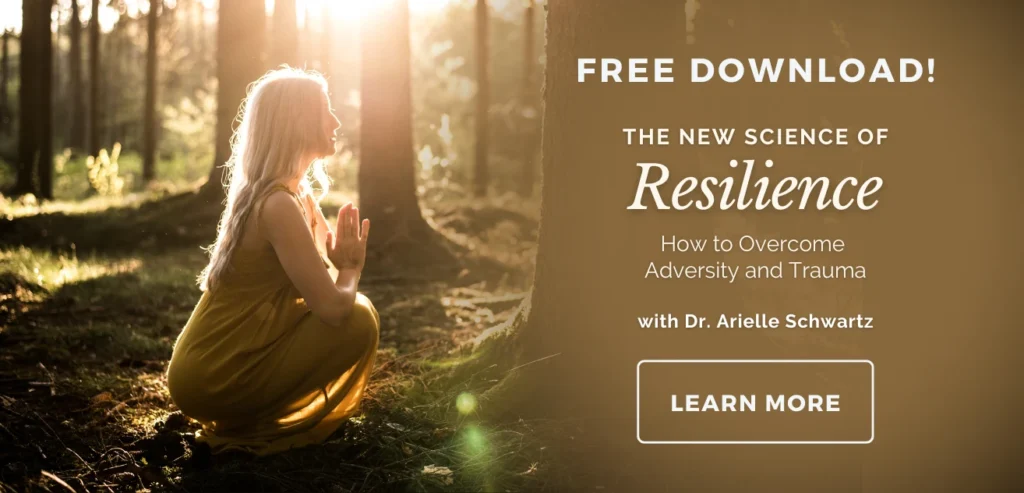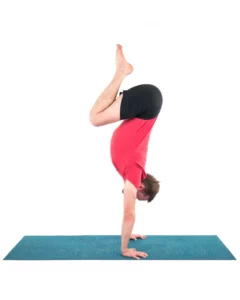The Anatomy of Marichyasana C: This Seated Twist’s Secret Challenge

You have no trouble sitting upright in Staff Pose (Dandasana). Your hamstrings, which are stretched in that seated shape, don’t cause your torso to slump. But once you bend your knee to enter Sage Marichi’s Pose C (Marichyasana C), the seated twist, your spine rounds. What gives?

To understand the secret challenge some people face in this seated spinal twist—and to learn easy strategies to address it—we need to dive a bit into anatomy.
What Muscles Are Involved in this Seated Twist?
Well, lots, of course. Because a seated twist is a fairly complex shape. But to understand why it can be hard to sit upright, even when your hamstrings are sufficiently open, we’ll focus on one specific lower body muscle: your adductor magnus.
Your adductor magnus attaches your sitting bone to points lower on your femur, your thigh bone.
Know what other muscles attach to your sitting bone? Your famous hamstrings. Yep. That trio of muscles attaches to your sitting bone and to your lower leg below your knee. That means the hamstrings cross your hip joint and your knee joint. When you sit on the floor with your legs straight in front of you, your hamstrings are stretched across both your hip and your knee joints. If they’re tight, they’ll pull your sitting bones toward the backs of your knees, tucking your pelvis and rounding your spine. Hamstrings get a lot of flak for making it challenging to sit upright in seated poses.
But remember: your hamstrings cross your knee. That means you take your hamstrings off the stretch when you bend your knee to enter Marichyasana C. If you can readily elongate your spine in Dandasana, but your back rounds when you bend your knee for a seated twist, your hamstrings are not the culprit.
Adductor Magnus, the “Fourth Hamstring”

Enter adductor magnus, sometimes called the “fourth hamstring.” The adductor magnus joins your hamstrings in crossing your hip, so it’s stretched in hip flexion—when you pull your knee toward your chest.
However, the adductor magnus does not cross your knee joint. So, while your hamstrings are stretched less as you bend your knee, scooting your foot closer to your seat doesn’t release tension in the adductor magnus. In fact, the closer you draw your thigh toward your torso, the more you tension adductor magnus.
The Anatomy of Twisting Illustrated

To visualize this phenomenon, have a look at the resistance bands in the photo. The pink one represents the hamstrings. It crosses both the hip and the knee. See how it’s slackened when the knee is bent?
Conversely, the green band is pulled taut, demonstrating the stretch on the adductor magnus as you bend your knee for a seated spinal twist.
So, if you start to slump as you slide your foot toward your pelvis, it’s quite possible that the adductor magnus is resisting the added stretch.
How to Do Marichyasana C if Tension on Adductor Magnus Slumps Your Spine
There are a couple of easy strategies to cut adductor magnus some slack so you can sit upright in a seated twist.
1. Step Your Foot Forward
Stepping your foot forward decreases hip flexion. It moves your thigh farther from your torso, easing the stretch on the adductor magnus and allowing you more freedom to sit upright.
2. Sit on Blankets

The same principle applies here: elevating your hips on blankets slides your thigh away from your trunk. The result is less tension on the adductor magnus and more space to sit erect.
Why All this Emphasis on Sitting Upright?
The basic premise is that rounding and twisting places the discs between the bones of your spine under torque and compression. That’s a scenario that, under high load, can cause disc injury. This is why, when lifting a heavy object, you’re advised to square off to it (so you needn’t twist) and bend your knees rather than stooping to pick it up.
Note the qualifier in the paragraph above: “under high load.” Is a slow-moving yoga twist sufficient load to cause damage to your intervertebral discs? Honestly, probably not. You’d have to pull awfully hard with your arm in order to supply sufficient pressure.
That said, there’s value in cultivating the body awareness that enables you to sense whether you’re sitting erect or rounded. And why not invite a little activity into the back body muscles that lift your torso up? They likely spend a good deal of time hanging out in an elongated position anyway since we often sit slumped in chairs and over devices. Using them to lift your chest in a seated twist gives them a chance to do their job! (Additionally, rounding and twisting may not feel awesome if you’re practicing with a prior disc injury.)
Final Seated Twist Tips for Open Hamstrings, But a Slumped Spine in Marichyasana C
So if your torso is readily vertical when both legs are straight in Dandasana, but you find yourself rounding when you slide your heel toward your hips for a seated twist, try these Marichyasana C tips to decrease the stretch on adductor magnus and give yourself a bit more space to sit up.
Also, read...
Teaching Svadhyaya: 3 Ways to Encourage Self-Study in Yoga
In Celebration of Gray-Haired Yoga – Busting the Myth of the Yoga Body
Related courses

Jennie Cohen, YACEP, E-RYT 500, started teaching yoga in New York in 2006 and now teaches aspiring teachers, experienced teachers, and movement enthusiasts all over the globe. Study with Jennie to learn anatomy in fun and practical ways, to build or refine your teaching skills, and to expand your movement repertoire. Jennie’s fascination with the body in motion and her studies of the texts that form yoga’s philosophical foundation infuse her teaching, making it both informative and transformative.



